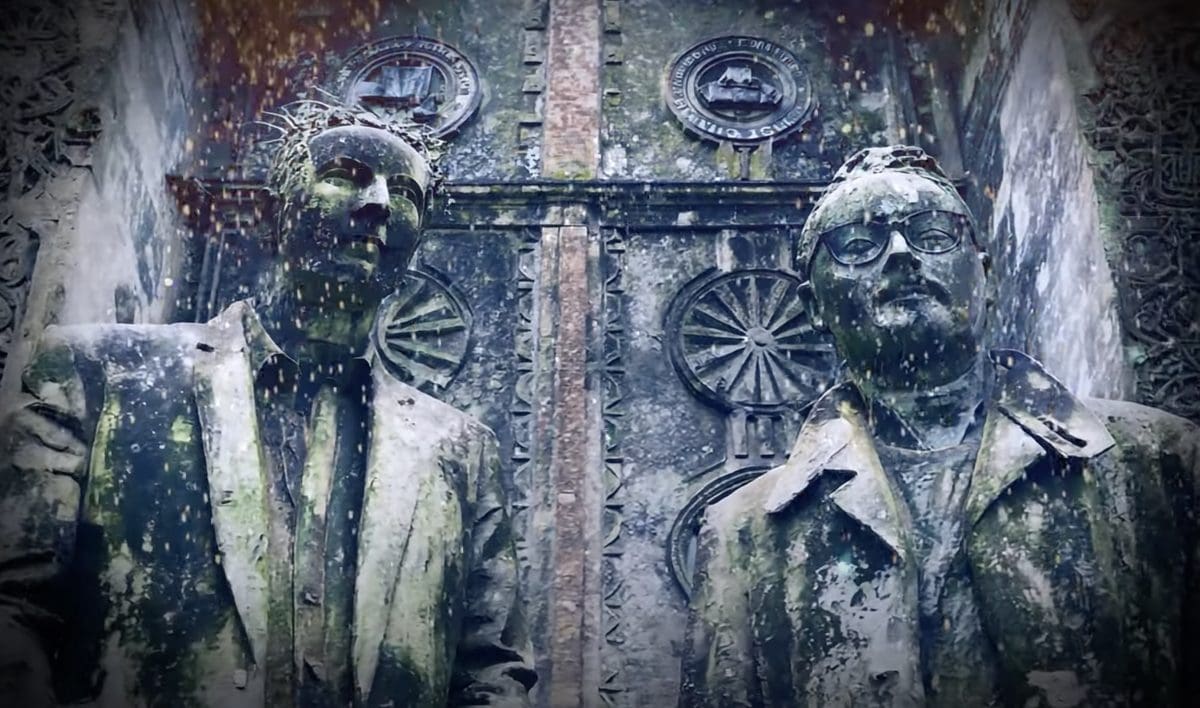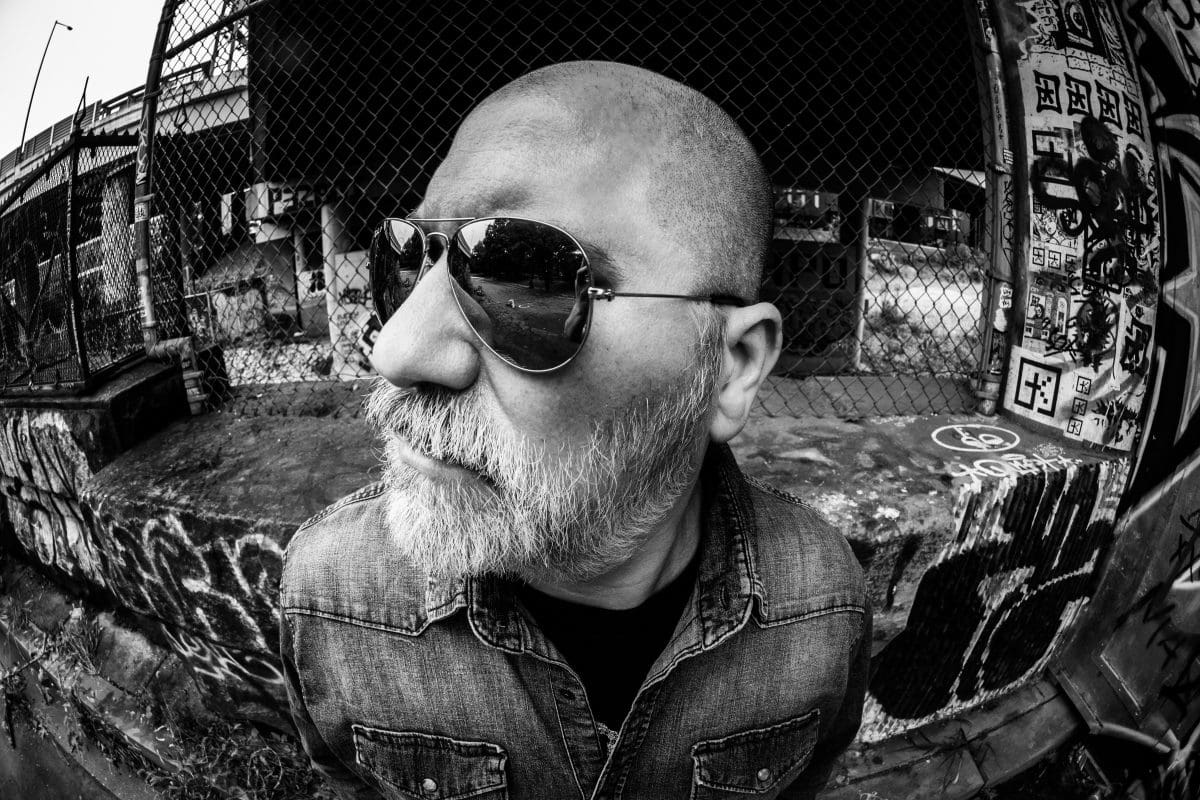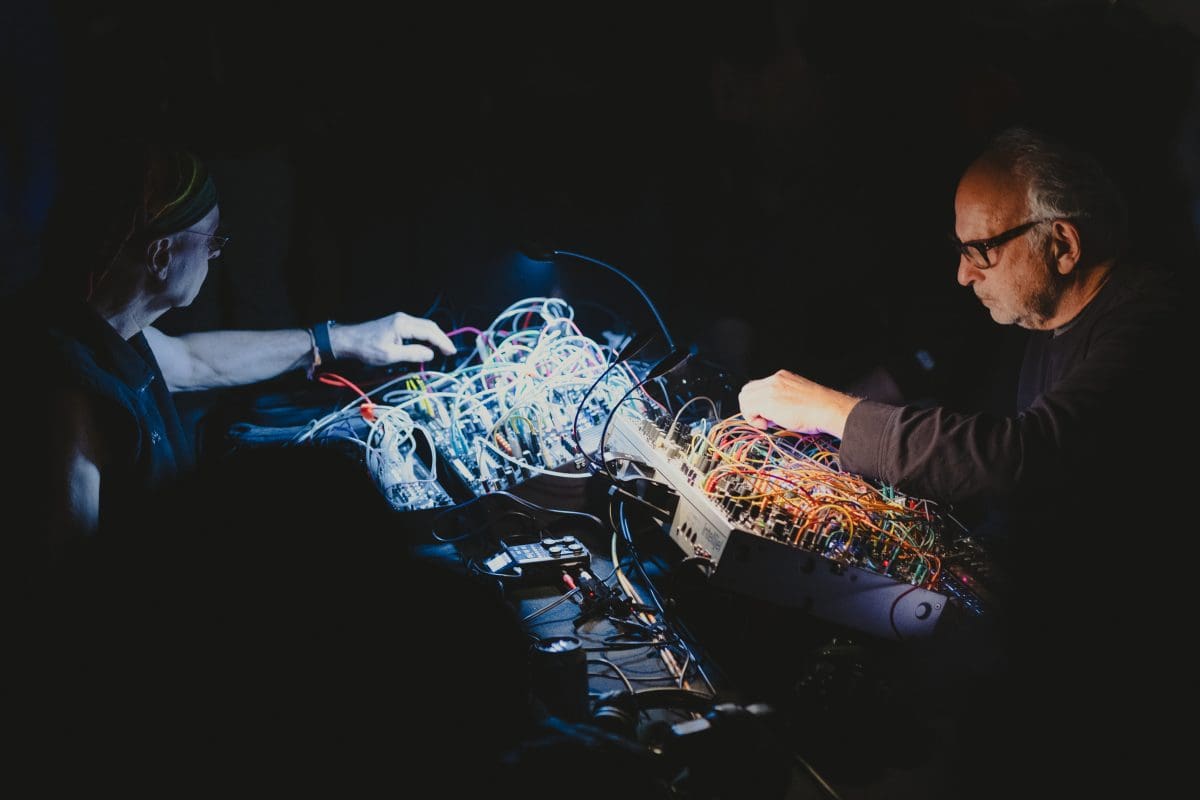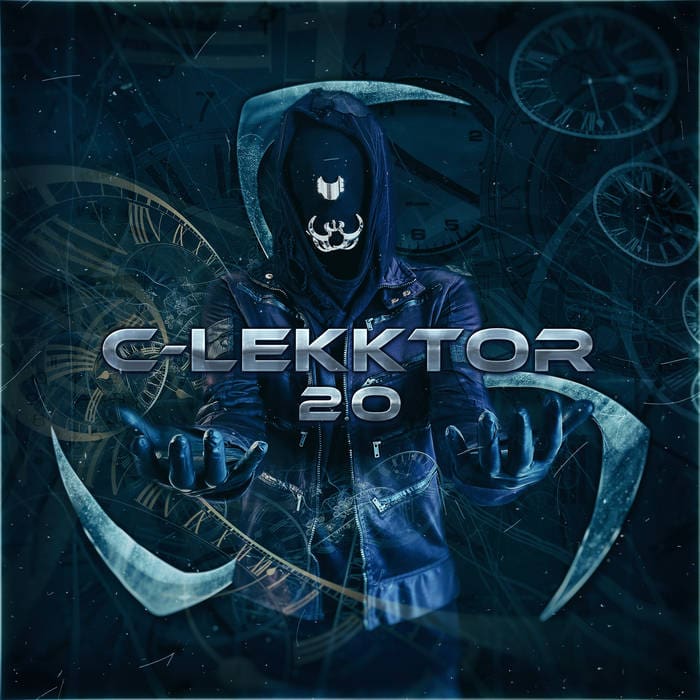‘Click Interview’ with Damage Control: ‘The Standard Has To Be High Or Why Bother Is My Motto’
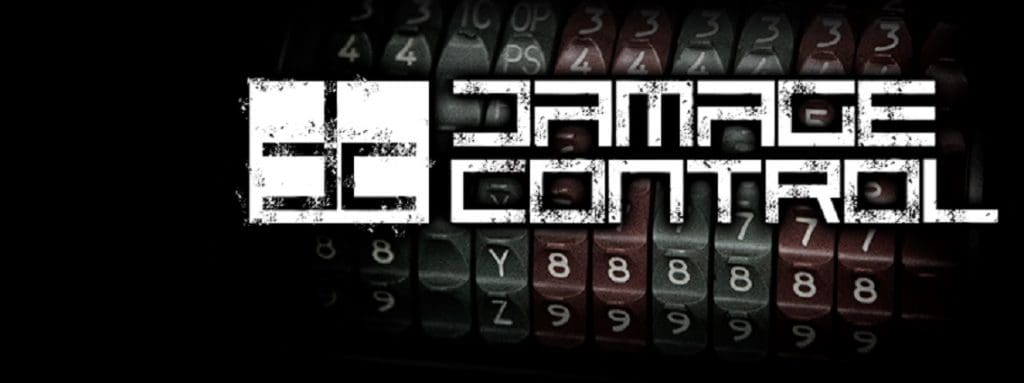
I last year discovered Damage Control by the successful debut full length “Ultranoia”, which is a real masterpiece revealing intelligent and sophisticated electronics. Set up by Australian core members Bill Barsby and Damian Davis they got joined by Markus App (Germany) and Jason Podmore (UK). “Ultranoia” became one of my personal favorite albums of 2017 so I get in touch with Bill and Damian to ask them a few questions. And they had a lot to say…
(Courtesy by Inferno Sound Diaries)
Q: I get the impression Damage Control is a project driven by a few core members joined by extra musicians who can join in and go whenever they want. Is that right and can you tell us a bit more about the background of Damage Control, the concept and the coordination?
Bill: At the project’s core at all times you will find Damian Davis and myself. Markus App has also been a part of the inner core of the band, he’s still involved, but more on a casual basis these days. I’m glad we did some music with Jason Podmore, an old friend of mine in the UK. New members are Richard Thacker and Craig Saunders. Richard has been involved with synth jams we had over the years and is a talented guitarist and sound designer. Craig joins us from Sydney industrial band Novakill. Craig is a great programmer and percussionist and is driven by similar influences to us with his approach to music production.
The core line up for the new album “Oblivion Grid” is now Bill, Damian, Richard and Craig. We also owe a lot to Craig Huxtable and Chris Peterson from Ohm along with Claus Larsen from Leather Strip. This collective effort and push to get things done helped get our debut release “Ultranoia” off the ground.
I’m always looking to forge new musical relationships with people on the same or a similar page to us. I can’t imagine any other people in the world I’d trust our mix and masters with than Chris and Greg Reely. It feels to me like Craig Huxtable and Chris are in the band too. We will always try to collaborate with them creatively on tracks as and when schedules allow. We collaborated with Ohm on a few tracks on “Ultranoia” and they have performed “City Of Ruins” in Germany and Canada in their live sets. I’m happy to have such a great team of talented and nice people around me (albeit dotted around the world).
I can reveal exclusively to Side Line a new Remix-EP of tracks from “Ultranoia” is well underway called “Hypernoia – The Remixes”. We are currently collaborating with Brian Bothwell of old-school industrial legends Manufacture on this project we are excited to confirm. This will be released later in the year.
An album of new material called “Oblivion Grid” which is half written and sounding epic to us so far is well underway, featuring the solid new line up. We expect to release that album in 2019. We have began collaborating with other artists in Germany, Slovakia and the US who are new to Damage Control. These guys have excellent track records for industrial music. Watch this space for more details on that. I’m excited that Chris Peterson and Greg Reely are on board for mixing and mastering on both “Hypernoia” and “Oblivion Grid”.
Please keep an eye on our website www.damagecontrolofficial.com and Facebook page www.facebook.com/damagecontrol for updates.
We are so very appreciative and thankful to all the cool folk around the world who have supported us with purchases of “Ultranoia” and the positive reviews we have received. Your support means a lot to us. It makes a huge difference to help kick start the next writing and recording project for Damage Control. We cannot thank Side-Line/inferno Sound Diaries enough for their excellent review of “Ultranoia” and it polling at number 13 in the top 25 reviewed releases of 2017 by Side Line Reviews! Thanks for your 9/10 review!!!
In regards to the concept and the co-ordination of the project, being a music technology, gear head, and huge music fan along with my fellow artists in this project, over the years we have always been determined to create something we like ourselves. We have tried various real-time recording technologies, but have found the perfect workflow for us is to simply use dropbox and exchange audio multi tracks (stems) and use a google calendar to help keep organized with who is working on what and when, and what the deadline is. This also of course addresses the time difference issue. I very much push this agenda from the ground up and start mini projects with each member, and collaborator and that can take on a life of its own and go in any direction without creative boundaries other than making sure we have a central vibe and sound people can identify with Damage Control’s music.
With a lot of material we can pick and choose what works together to make a cohesive sounding release. It’s very important to me that everyone is enjoying themselves when working on a record and that it does not feel like a chore or for anyone to feel trapped creatively at any point. We are pretty free form with how we work. This allows for great creative accidents and collaborations to mutate naturally. A collective pool of individual creative strengths working together to achieve something great is the goal. It’s also good to have disagreements in creative direction at times so the compromise can make for interesting results. This to me gives a certain kind of tension and unpredictability to the music in how it flows together and hopefully makes for an interesting and varied listen.
Knowing Chris Peterson will be producing us requires everyone to bring their A game so we are all of course motivated by that too. Chris helps us make important decisions in the writing process and we have a good laugh along the way with analogies of a track and its mix at times. It’s certainly not a project for the easily butt hurt! You have to have a good sense of humour with all this. I would like to mention how two talented friends of mine here in Melbourne have had an impact on the image of Damage Control’s “Ultranoia”. Adam Verspaget (Photography) and Roberto Massaglia (CD Design and artwork).
Q: I can imagine it’s not that easy to accomplish a full length album featuring multiple members. How did the writing and recording of “Ultranoia” happen and what has been the input of each member?
Bill: Well that was an interesting rollercoaster ride to get the thing off the ground! It was a struggle at times although it had its moments of excitement, fun skype conferences, and brainstorming. My challenge was to work with everyone individually to focus on their strengths and come up with solutions for the recording process and workflow, something Mitrefinch TMS helped us with. Dealing with different opinions on how things should be done, and finding a common ground and plan of action. The brief was to make something cool and then bring it all together through trial and error and finding the right creative path to tread and people to work with. What I love about working with a few like minded people is when you hit a brick wall with an idea, someone else picks up the ball and runs with it and then comes back to the with a fresh and new inspiring perspective on a track which reignites the creative process. This keeps things moving forward.
The standard has to be high or why bother is my motto. I think collectively we made something really cool that achieved its sound by our individual differences. That was an interesting point you picked up on in your review last year. The song lyrics themselves are often derived from Damian’s interpretation of my stories, fact or fiction and his. It’s always a fun part of it to brain storm the lyrical ideas and set the scene for the track. Damian is very talented in this area we feel. He usually hits the spot for what we had in mind for the vibe and the delivery. We focus on painful world affairs and the unpleasant realities of what’s going on in the world. I often come up with the concept and the idea and then we flesh it out until the song unfolds. Damian just goes for it with the lyrics and vocal delivery and I will edit the results until I’m happy and then go back to him with suggested fine tuning. Other times he just nails it straight away. It was awesome working with Craig Huxtable and Markus App on the tracks they sung on.
With us coming from different countries and cultures, it mixes things up nicely and keeps it interesting for us. In the spirit of keeping the international collaborative approach to how we make music, we are now working with other artists in other countries including Slovakia.
As far as the input of each member on “Ultranoia” goes, to highlight individual strengths and our approach with that project. I like to drum program and experiment with a lot of synths including the rare vintage collection at the Melbourne Electronic Sound Studio and to bring interesting rhythms, sounds and vibes to an idea, ambient drones and pads are also my thing. I’m fussy about the signal flow and sonic flavours different equipment brings. I often re-record other people in the band’s midi through high-end hardware synths like Moog, Doepfer and Oberheim, DSI etc.
Markus was always good at arranging and some of the melody along with great programming and sound design in the software world such as Omnisphere but I think it’s safe to say Damian is our melody man, vocal meister and bass are also strengths and atmospheric pads. He also collects hardware synths and vintage samplers like myself. Jason and I used to like messing around with weird samples and Damian too to try and have something sublime in there that might mess with your head when you’re listening in the dark by candle light.
Craig Huxtable I believe recorded his vocals for “City Of Ruins” in a van if my memory serves me correctly as not to upset his neighbours in Victoria, BC, Canada where he lives. I think he was able to record “Trauma” at home as that one’s a little less angry! Having Markus sing in German on the track “Angst” was also a highlight and with Ohm taking care of a lot of the music on that one. This was intended to be a remix so that was a happy accident how that one turned out.
Damian: Yes, I agree that accomplishing this album had challenges, having multiple members. It was a blessing as well as a trial. There was so much to gain from having a few extra sets of ears, which were willing to put their money where their mouth was. This is crucial this fact, because there is only so much external opinion and advice a musical outfit can tolerate and absorb. I often drew parallels to the trials and tribulations of The Beatles, where too many cooks could spoil the home-brew. But in the linear fashion of Exporting Stem tracks to each other, cyclically, the music could do round-robin and end up sounding soul-less, or it could build a serious shit-load of power. It was hit-and-miss really. But we could always revert to the original stem package at any stage of the way. Bill’s mastery at co-ordinating this, at certain times, ’world-circus’, was nothing to be envied, and yet totally astonished with.
Q: Right now you’re in between 2 albums so how do you look back at “Ultranoia” and what can you already reveal about “Oblivion Grid”? What will be the main differences and sound evolution?
Bill: It’s nice to reflect on “Ultranoia” being well received so far, the effort to create our debut and find our sound has been very rewarding on all fronts.
For “Oblivion Grid” Markus, Craig, Damian and myself have had a good push to write new material and it’s going well. Richard has started adding to our demos and we are reworking some older stuff we did not finish from years ago with the Oberheim Xpander classic old synth from the 80’s. You will also soon have a sneak preview of the new remixed version of “Ultranoia” we are calling “Hypernoia The Remixes” which debut’s Craig Saunders and Richard Thacker to Damage Control. It’s great to have Craig and Richard on board who bring diverse skills with a common ground to what we are doing. I would say that so far, the new material for “Oblivion Grid” is sounding very much like a fine-tuned evolved version of us. There might be more guitars on this one and some new vocalist talent. We have some awesome new songs shaping up. The collaborations we currently have lined up with VIP remixers for this album, we are pretty excited about. We look forward to revealing more about that as it happens with the future releases.
Damian: Well, interestingly, I think that “Hypernoia”, our remix collection, is one way of us to reflect on our efforts with “Ultranoia” in a very hands-on way. We can see where things could easily travel in a direction that could lose the momentum and impact, that a brand new album would have. So “Hypernoia” is a release for us, that deals with this possible issue very elegantly. In the early days of Depeche Mode, sonic variation was critical from album to album, and a deep obsession with technical and musical change was vital for the band to move forward on. I feel that this may be a path we could travel, and it would be remiss of us to settle on a ‘winning formula’ if we refused to experiment with sound. “Oblivion Grid” shows such promise, and I’m sure the final sound will impress us, and all who hear it.
Q: On “Ultranoia” I felt a real strong concern about sound creation. Damage Control sounds not like a band using ‘cheap’ preset sounds, but musicians with a real quest to find unique sounds! What is the sound creation and -approach of Damage Control all about?
Bill: It’s great people have noticed this aspect of what we do. The band is made up of engineers as well as musicians, we believe in experimenting with many combinations of analogue and digital hardware vintage and current. I like nice pre amps and high-end effects. I am part of the team who represent MOOG, Novation, Teenage Engineering and Elektron in Australia. I am lucky to have access to all of these wonderful synthesizers. We also dabble in a small amount of software we believe to be the best after a lot of trial and error. We generally find ourselves preferring to work with hardware synths again. The machines have a soul of their own. We are using a Kemper profiler on guitars for “Oblivion Grid” so going back to hardware again there too. An extremely cool and unique technology for guitar amp and effect solutions with all the realism you want from actual guitar amps as apposed to regular amp modelling in software. Software is however, awesome in context to certain things. I heard the excellent recent Gary Numan album “Savage” only uses software and I know Gary is a big fan of Omnisphere. It’s just a question of preference and what inspires you. The more sonic colours in the mixing pallet, the better as far as I’m concerned.
Between us we have a pretty large collection of gear and with access to the vintage rare collection of synths at The Melbourne Electronic Sound Studio, this gives us a point of difference. We make the effort to do something interesting rather than just reaching for a plug-in. We do that too, but usually to replay field recordings or sound libraries we have resampled into the computer from older samplers. Damian and I have both been enjoying the Emu Emulator V Sampler with the Z Plane filters from the 90’s in recent times. I grabbed a Proteus 2000 and Morpheus from eBay too for ‘Oblivion Grid’ sessions. I used the EMS VCS3 Putney on “Ultranoia” and a lot of my recordings of that old beast from 1969 are being used on “Oblivion Grid”. That synth is an important part of our sound. We have an interesting and very cool synth community in Australia with access to the M.E.S.S. as I mentioned. https://mess.foundation/
Damian: Yes, I’m amazed at how finely tuned ears, which are used to hearing a lot of this style of music, can aptly spot any differences in sound design (be it digital/analogue/found-sound/acoustic/preset/original). Whether this be true, or whether reviewers can sense that musicians are also in it for the sonic discovery, is a true talent. The one thing I can’t do without, is instant access to a device that samples your voice, and can do immediate manipulations, all without booting a computer. There is no creative killer worse than feeling compelled to check your emails, just as you get a musical idea in your head. Some bands who use laptops seem to be doing this onstage, and seriously, who could tell otherwise? Original sound creation is VITAL in this preset-soaked era. I would shudder and wince if I heard a preset on a recording, that I would possibly ever regret using. If the project called for that type of sound, yeah then great, but for this project, there is no compromise.
One great thing about some types of hardware, and outboard gear, is that they are either too rare to clone virtually or mass produce Behringer-style, or they can have presets made on them, that can’t be replicated easily any other way. I personally feel that the approach of Damage Control is a mix of discrete sonic-design, and blatant outright gear endorsements and plugging. You can’t maintain a mystique for too long, whereby people aren’t inquisitive about what you use to write your music. It’s electronic. We aren’t pioneers. There’s no hocus-pocus voodoo to that…lol. It’s about finding a combined spirit of adventure and a social, emotional, mental release of personal takes on world problems and issues.
Q: The mixing and mastering of an album is such an important aspect, which I think is sometimes neglected by bands. I can imagine that’s the reason why you worked with Chris Peterson and Greg Reely? Tell us a bit more about this aspect?
Bill: The huge difference it made to us having Chris Peterson on board as a producer. I thank Craig Huxtable for helping to make that happen and that also led to having Greg Reely involved with final sonic details. I have been a fan of Chris’s work as an artist and mixing engineer with Decree, Frontline Assembly, Noise Unit, Delerium, Equinox, Intermix, Ohm etc for decades so to be able to just say to him ‘please do your thing’ rather than to a different producer where we would be saying ‘please do it like this Chris Peterson guy does on these records’ that makes a massive difference to me. Chris doesn’t just mix and master Damage Control tracks, he pours his heart and soul into the project. As I’ve mentioned before, we consider him a member. I have a good rapport with Chris and we get along as friends, which makes it a fun project to work on for him as well as us. He takes our music where we need it to go.
It was also fantastic to collaborate with Claus Larsen from Leather Strip on the mixing of “Hate Crime” in which he added the samples to and nailed a fine remix of that track also. We have had success in clubs with “Hate Crime”. It’s been an awesome learning process for Damage Control and gotten the project off the ground. The album is a mixed bag of styles we like. To anyone reading this, please check us out if you have not already.
Damian: A big part of pursuing this project, was to encapsulate a particular sound that all of us pretty much grew up with. As Bill states, our relationship with Greg and Chris, extends to utilizing these guys as members of the band, as their fingerprint on the final sound is vital to our cause. Otherwise, we would have floundered along with leagues of other acts, who shun, or are ignorant to the power of experience provided by these geniuses, and other such super talents we collaborate with along our journey.
Q: You guys are experienced musicians who’re into music for years now so what does Damage Control mean to you and how do you see this project evolving during the next few years?
Bill: Well we know what we like and how we like it done. We also need to make sure everyone working on the project is having fun. To me Damage Control represents therapy using Cubase and creating an outlet for creativity and collaboration. To be releasing musical outcomes of sonic experiments and compositions that turn out good enough that we like it ourselves while keeping standards high. I know I can speak for all of us; we are long time fans of electronic music, industrial, goth and post punk kind of stuff and a bit eclectic across the board too. We hope to play some one off shows from time to time when possible. It would be nice to play WGT but for now we are a studio project. We will see what happens. Making good records and enjoying the process of making them is the number one priority for us.
Thank you for the interview and your support. It’s very much appreciated and we love Side-Line!
Damian: I want to get to the difficult third album stage, and destroy that cliché once and for all… Haha, but seriously, I believe that no matter what fate may bring to the Damage Control viking table, music will still exist in our hearts. I would love to perform live again, but we shall see what the future brings for us. Thank you for your amazing level of support for us, and I fully appreciate the time you have spent with us on this interview. Cheers.
Since you’re here …
… we have a small favour to ask. More people are reading Side-Line Magazine than ever but advertising revenues across the media are falling fast. Unlike many news organisations, we haven’t put up a paywall – we want to keep our journalism as open as we can - and we refuse to add annoying advertising. So you can see why we need to ask for your help.
Side-Line’s independent journalism takes a lot of time, money and hard work to produce. But we do it because we want to push the artists we like and who are equally fighting to survive.
If everyone who reads our reporting, who likes it, helps fund it, our future would be much more secure. For as little as 5 US$, you can support Side-Line Magazine – and it only takes a minute. Thank you.
The donations are safely powered by Paypal.


